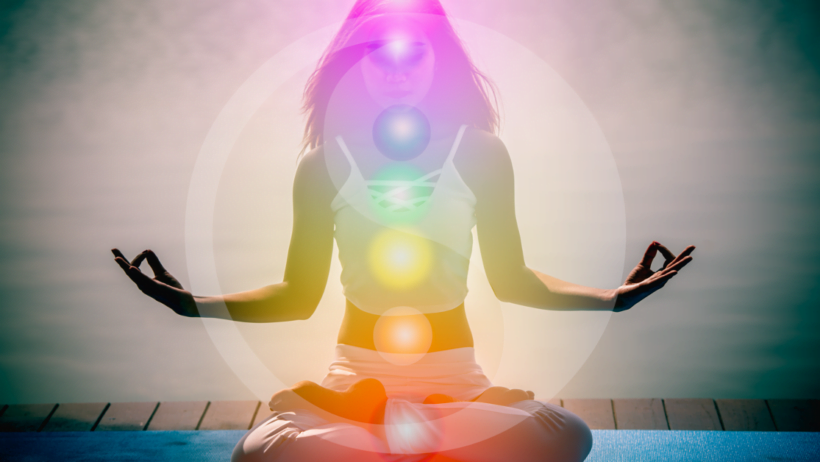This rather evocative hand gesture is a little known ‘mudra’ or hand position used in yoga and meditation called the ‘Shield of Shambhala’. Like many other subjects in this area, little is known about its origin and there is little in the available literature. It is hoped that this article will add to the current body of knowledge.


In Hindu and Buddhists tradition, Shambhala is a mythical kingdom laid out as an eight petalled lotus flower. It is mentioned in various texts of the Eastern traditions including the Kalacakra Tantra and Zhanazhung texts with a strongly Buddhist influence to the Vishnu Purana of Hinduism.
In the Buddhist tradition. Shambhala is ruled over by Maitreya, a ‘Universal Buddha from a future time’. The Kalacakra Tantra prophesies that when the world declines into greed, separation and war and all is thought to be lost, the 25th King of Shambhala, ‘Kalki’ will emerge with a mighty army to vanquish “Dark Forces” and usher in a worldwide Golden age.
The Vishnu Purana, written between 300 and 400 BCE, by the esteemed Hindu sage and compiler of the Bhagavad Gita and Mahabharata also refer to Kalki, but as the final incarnation of Vishnu to usher in a new age. In this ancient text, Shambhala is said to be the birthplace of Kalki.


There is no disagreement between traditions that Shambhala is a pure, peaceful land. This yoga mudra is said to originate from here and confer the following benefits with its use:
The feeling of Peace. When combined with conscious breathing, this mudra is said to bring peace to the individual even in the most turbulent of times.
Feelings of vitality. When used for longer periods, usually no more than twenty minutes, holding this mudra is said to promote feelings of vitality.
The mudra is referred to as ‘Shield’ as it is said to ‘put to flight’ feelings of negativity. This is said to be accomplished through the unveiling of Awareness and ‘uplifting the soul’ through feelings of oneness and connection.
How to perform.
The hand positions are reversed according gender.
For females. The right hand is clenched into a fist and held palm facing down, against the area in between the xiphisternum (breast bone) and umbilicus (belly button). The left palm is pressed against the right fist. The open palm should always face upwards. This position is held for five to twenty minutes and used in conjunction with conscious breathing.
For males. The left hand is clenched into a fist and pressed against the right palm, remembering to hold the hands in the same area.


How it works.
From the basis of the yogic sciences, this mudra is said to focus vital energy ‘Prana’ carried in the breath to the Solar Plexus Chakra (3rd Chakra, known in Sanskrit as ‘Manipura’. Chakras correspond to energy meridians (energy focal points) found in the body usually associated with endocrine organs such as the thyroid or pancreas.The third chakra is said to be responsible for will power and inner strength. This unveiling of ones’ inner strength leads to feelings of peace, subsequently vitality and eventually oneness.
Does it work?
A good starting point (and this applies to medicine also) is to acknowledge the possibility that we don’t know everything about everything. Acupuncture, for example relies on the principles of these energy meridians. It has proven efficacy for a number of conditions including chronic pain and addictions’ and has almost 30 000 articles in the peer-reviewed scientific literature. In the United Kingdom, acupuncture has the backing of the National Institute for Health and Clinical Excellence (NICE). But getting an answer from a conventional physician or scientist on its mechanism of action is not easy.
As this is such a subjective experience, there is little or no objective mainstream data on its efficacy. That being said this technique is free (something that makes it unlikely to garner funding from multinational healthcare companies). It also doesn’t take long and if you remain open to the possibility, it could make all the difference in a moment of need…or it may not. You never know unless you try.
I hope you enjoy the practice!
Article by Vikas Pandey
References:
https://en.wikipedia.org/wiki/Shambhala/
http://veronicahope.com/hope/index.php/healing-mudras/
Photography by Srishti Pandey and MustangJoe




